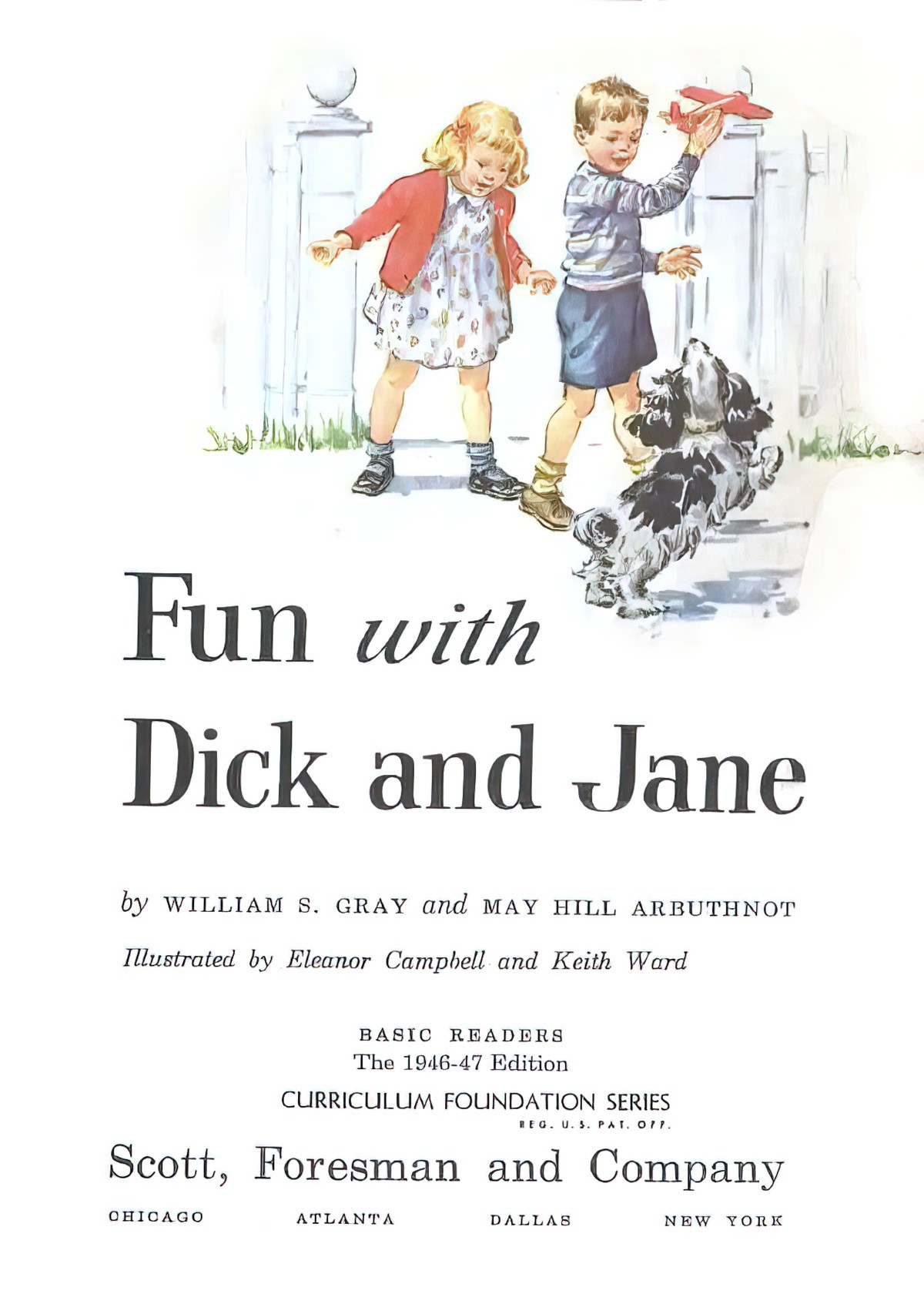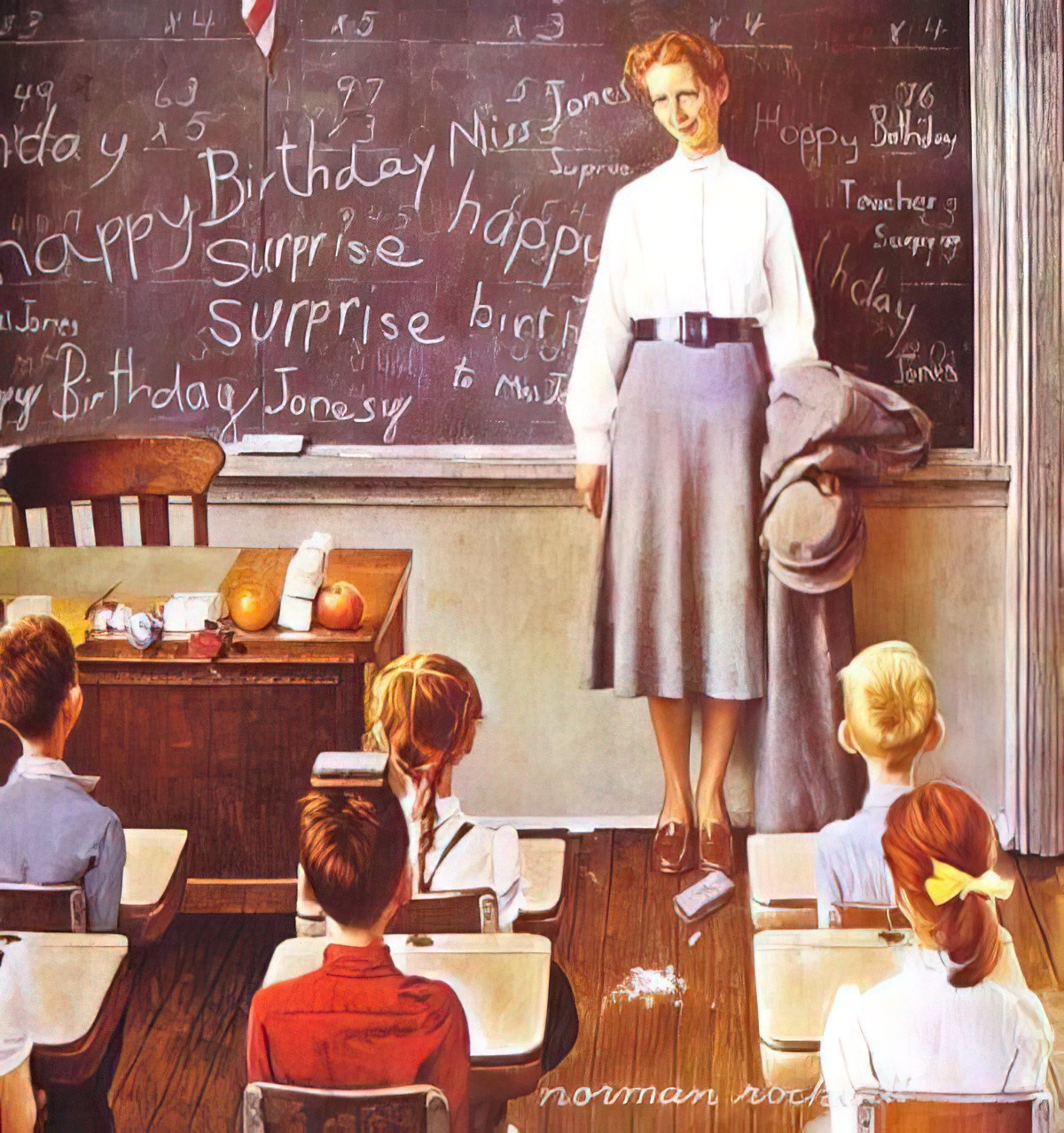Some short stories exist mainly as character studies. Fun With A Stranger (1962) by American author Richard Yates is one example. The story paints a portrait of a particular kind of old-fashioned school teacher. The reader feels empathy for everyone involved, from the young pupils to the teacher herself.
STORY NOTES
A man retells what it was like being a third grader in Miss Snell’s class. Two particularly memorable events happened that year: The field trip to the locomotives and the Christmas party.
SETTING
The setting is unambiguously mid-twentieth-century America, and though this town is set somewhere near a place called Harmon, it’s not clear which Harmon this refers to — there are a handful — one is a ghost town. There is mention of Halloween and Thanksgiving, which of course are specifically American. We can also tell from the word usage: vacation, raincoats and rubbers.
The children are off on a field trip to see ‘locomotives’, which places this firmly in a certain era, just as my own real-life primary school field trips to local tobacco and hops farms place my childhood in a certain era. (In 1986 we also went on a school excursion to the local police station. One of the other eight-year-olds asked why there was blood on the wall, and the police officer told us.)
It’s significant that female teachers were paid no more than a living stipend at this time, because Miss Snell’s purchase of a class set of erasers was no small thing for her, even though the gift was brushed off by the young narrator as a disappointment.
CHARACTERS
The story is told by an intradiegetic narrator who doesn’t position himself in the classroom. We only know that the narrator writes as an adult from memories of being a pupil of Miss Snell’s third grade class. Only a pupil could have this information. (We assume the narrator is a boy because he writes of girls as if slightly removed from them. Also, I suppose, because the author has a male name, and we tend to conflate authors with narrators.)
The familiar childhood rivalry that often exists between two classes of the same grade is used to great effect in this story. The young, pretty, exuberant and socially adept Miss Cleary is set up as the clear antithesis to the old, starchy, awkward, black hat and black coat wearing Miss Snell, whose very name sounds brusque. Since class rivalries naturally occur, this gives rise to the protectiveness Miss Snell’s own pupils feel towards her.
The rivalry is underscored first by the Taylor twins, who boast that they are going on a field trip, and next by Grace, the girl who interrupts Miss Snell’s class on the final day before Christmas by asking for a paper plate.
THEMES
Children can be more emotionally adept than the adults who care for them.
The title Fun With A Stranger won’t be lost even on modern audiences, due to the 1977 and 2005 movies called Fun With Dick and Jane, the title of which is taken from an American grade one basal reader, used in American schools from the 1930s through to the 1970s. The Dick and Jane readers were coming under heavy criticism during Richard Yates’ adulthood, mostly for their lack of diverse characters, but also because they are so very easy to parody. The stories are ridiculously simplistic, even for the youngest of readers. It wasn’t until the 1960s that Dick and Jane became a bit more sophisticated.
So the title of this short story has been chosen to evoke Dick and Jane, or rather all the things the Dick and Jane series evokes: innocence, awkwardness, something that’s easy to poke fun at because of its very earnestness. Likewise, this is how we are to think of Miss Snell:
Still, they could not hate Miss Snell, for children’s villains must be all black, and there was no denying that Miss Snell was sometimes nice in an awkward, groping way of her own.
Dick and Jane became increasingly out-of-touch with the children reading it. In the same way, Miss Snell started teaching when teachers typically removed their personalities from their classroom personae. The children know nothing about Miss Snell other than what she shows them in class of her teaching style. As adult readers, however, we can fill in the gaps: Miss Snell is a lonely old woman who has interpersonal issues in her private life. If she fails to relate to third graders, we assume she has no family of her own.

Affection is expressed in many ways, and not always appreciated or reciprocated.
Just like a Dick and Jane reader, there are no ‘baddies’ in this short story. In other stories the rivalries set up between groups of pupils, or between pupils and teacher, encourage the reader to side with one group over another. But because this story is retold from an adult’s point of view — and an adult who clearly has empathy and wonder for Miss Snell — the reader can see that the pupils are far more important to her than Miss Snell is to the pupils, who rush out of her class at the end of the year and never look back.
TECHNIQUE OF NOTE
The Impression Of Imperfect Recollection
The challenge in writing as a narrator looking back in time is that of detail: How might the reader believe that all of the story necessary for an engaging story has been recalled accurately? What does Yates do to give the impression that these specific details really happened? After all, this is a narrator rather than an omniscient narrator, and a narrator’s memory is fallible.
1. Describe Habit
John Gerhardt and Howard White usually walked home from school together, and often as not….
“Hey, wait up!” Freddy would call.
If you listened to the podcast Serial you’ll have noticed this come up a lot — narrators remember past events partly because they always happened, not just because they happened on a single day.
2. Let The Reader Know That These Events Are A Summary
John Gerhardt had already made it plain to the twins once, in so many words, that he didn’t like walking home with a girl…
…he very nearly said something to the effect that…
3. Pick Events That Would Be Remembered
Sure enough, the things you remember from your third grade class, if anything, were the field trips and the parties.
See also: Details in Fiction
STORY SPECS
Richard Yates published two short story collections in his lifetime — Eleven Kinds of Loneliness and Liars in Love. This is from Eleven Kinds of Loneliness, which was released just a year after his most popular novel, Revolutionary Road.
3700 words
First person character as narrator. For more on this technique see: What is an extradiegetic narrator? (This guy is intradiegetic, the opposite.)
COMPARE AND CONTRAST
There is a short story by New Zealand Noel Hilliard about a boy with a drunkard father who idolises his teacher. Ultimately, the teacher disappoints. I read it back in high school and it took me a long time to remember its title: “Erua”. Unfortunately I can’t find it anywhere now, but that was a great story.
However, you can find some of Noel Hilliard’s other work in New Zealand’s 20th century Landfall magazine, which is now archived online. See my analysis of “Encounter“, for instance, set in the pub of a small 1970s New Zealand town.
WRITE YOUR OWN
The teacher in this story reminds me very much of a teacher I had for year 9 science. I’m pretty sure anyone who’s been through an educational system will have come head-to-head with some pretty eccentric characters. I wrote a story about this teacher and asked my writing group for critique. I was interested to learn that although what I wrote was non-fiction, some of the facts that happened in class came across to the reader as ‘unbelievable’. An interesting lesson when writing fiction based on real-life!
Header: Norman Rockwell HAPPY BIRTHDAY MISS JONES March-16-1956

